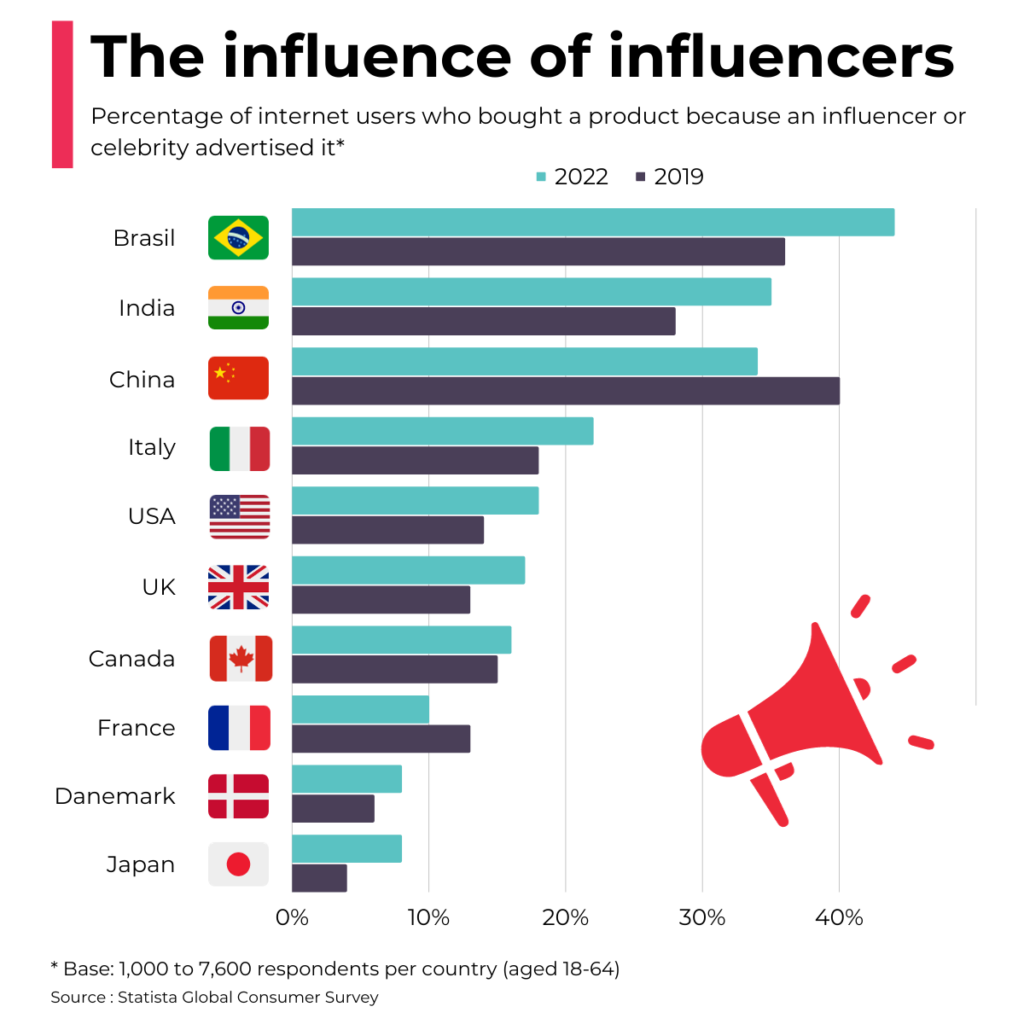Internationalization opens access to new markets and can provide opportunities for increased sales and revenue. This is particularly important when your domestic market is saturated. However, the path to international expansion is fraught with challenges and complexities. Many companies have encountered failures due to common mistakes made during the internationalization process. In this article, we will explore the top 10 mistakes to avoid during internationalization.” By understanding these mistakes and learning how to navigate them effectively, your businesses can increase the chances of successful global expansion. Whether you are a seasoned SME or a startup with global ambitions, these articles will help you steer clear of costly errors and set a solid course toward international success.
Inadequate market selection
Why is selecting an export market an important decision? For the simple reason that if you get it right, your results will skyrocket. If not, you will lose years and valuable resources in a country that will not provide the expected returns on your investments. This key step in the internationalization process involves researching potential markets, assessing the risks and rewards, and making a strategic decision about which markets to enter. Developing an internationalization plan requires complex and specialized market research. In the vast universe of data that can help you figure out which markets are most potential for you, two important questions are: how many estimated potential clients are available in that market and what are the capabilities and competences for your company to do business in that market.
When assessing the market opportunity and potential, it is important to consider both the current market size and the potential for expansion. Factors to consider include the current market trends, the size and composition of the market and the competitive landscape. Additionally, it is important to analyze the potential for new technologies and innovations that could open up new markets and opportunities.
Lack of marketing channel adaptation
Many companies believe they can enter new markets by changing little to nothing compared to their domestic market. Some countries favor different sales and marketing approaches. You need to adapt your marketing channels according to the behaviors of each market, and this can vary across countries within the same region.

For example, according to Statista’s Global Consumer Survey, which is representative of the online population, it is currently in Brazil, China and India that influencers appear to have the greatest impact on consumer choices. While the proportion of internet users claiming to have bought a product following an ad of this kind has increased in Brazil and India in recent years, it has decreased in China, although it remains relatively high (34%).
In most other countries, the tendency to follow the advice of influencers on social networks when making a purchase appears to be less widespread: around 10-20% of internet users. But it is also gaining ground. Among Europeans, Italians have the highest rate of influence: 22% said they had made a purchase because a celebrity or influencer had promoted it in 2022. In France, the figure is 13%, up four percentage points over three years. People in Denmark and Japan are among the least likely to be influenced by this type of advertising (currently 8%).
Lack of cultural sensitivity
Cultural differences can highly impact how your products or services are perceived. It plays a significant role in shaping a company’s success in foreign markets, impacting consumer preferences, business practices, and communication styles. As such, understanding and effectively managing these cultural differences is crucial to fostering successful international growth for your organization.
Before venturing into a new market, conducting comprehensive cultural research becomes a crucial step for your business. Such research entails gaining in-depth knowledge of the customs, traditions, and social norms prevalent in the target country. This understanding is paramount in enabling your company to tailor its products, services, and marketing strategies effectively to meet the specific preferences and expectations of the local population.
According to France’s prominent business newspaper, Les Echos, Sephora’s strength lies in perfumes, but Japanese women hardly wear perfume at all. It represents less than 5% of the cosmetics market, compared with 25% in France and almost 40% in the United States. Here, the market is driven by cosmetics and, for this market segment, sales must be assisted by sales people to get advice. But Sephora is banking on self-service products. Indeed, Sephora brought the idea of self-service to fruition for makeup, which is why there are product testers around every corner in Sephora.
Ignoring local laws and regulations
Different countries have varying laws and regulations regarding taxes, trade, labor, and product standards. Ensuring that the company complies with all the legal and regulatory requirements of the target market is key for success in international markets. This may include obtaining licenses, permits, and certifications, and adhering to local laws and regulations. Failing to comply can result in legal issues and financial penalties. This can be particularly challenging if you are part of industries such as healthcare, finance, and technology, which are heavily regulated.
For example, if you’re a healthcare company expanding into Europe, you’ll need to ensure that your products comply with the European Union’s Medical Device Regulation (MDR) and In-vitro Diagnostic Regulation (IVDR). This may involve adapting your products to meet new requirements. Also, submitting them for regulatory approval and ensuring that your manufacturing processes meet local standards.
Underestimating competition
Assume that you’re not the only one eyeing the international market. Be prepared to face strong competition, and have a strategy to differentiate your offerings effectively. You should analyze competition in as much detail as possible as they are a good predictor of demand and a good indication of easiness to access the markets you are analyzing. Look at your competitors’ customer data to get an idea of their market share and trends.
Competition for Amazon is high on the Indian market, with two e-commerce giants vying for the spot: Flipkart and PayTm. Flipkart (controlled by WalMart) was founded in 2007 by two former Indian Amazon employees, Sachin Bansal and Binny Bansal, and is the historic leader of online commerce in India. PayTm was founded in 2010 by Indian millionaire Vijay Shekhar Sharma. The three competitors are very strong and the war is going to last a long time, which means applying a powerful adaptive strategy to win the Indian market.
According to The Seattle Times to face up to the competition, Amazon has to adapt to the local habits of the sector. Many sellers, for example, don’t have the means to provide professional photography of products for the website. So Amazon has built studios in its warehouses to snap those images for them. Indian customers also remain most comfortable paying with cash on delivery. So Amazon has developed payment schemes that let customers give delivery men money when they hand customers a parcel.
Neglecting Payment Issues
The payment methods used from one country to another can be different. These differences are also present when it comes to paying online on an e-commerce site. If you don’t adapt to the means of communication used in your target country, then your chances of generating sales are diminished. But keep in mind that managing multiple currencies and payment methods can be complex. Ensure your payment systems are capable of handling international transactions and currency conversions.
According to Statista, in 2020, the credit card was the most popular payment method on e-commerce sites. In Singapore and Turkey, card payments account for 45% and 57% of total online payments respectively. In contrast, the preferred payment method in Malaysia is bank transfer (28%). To adapt to local preferences, a multitude of payment methods are available (Google Wallet, CB, Lydia, Paypal, ApplePay, PayPass etc). As mentioned in the paragraph above related to the competition, in emerging and developing countries, you can find a high prevalence of cash or cash on delivery methods, as seen on the graph below related to the most popular methods of payment in the Czech Republic.

Furthermore, exchange rate fluctuations might have a negative impact on your future profits. The vast majority of international online retailers, to maintain price consistency, prefer to charge a flat rate. It is still important to display prices in local currency, as many potential customers will abandon their purchases if the payment is displayed in foreign currency.
Ignoring Feedback
Feedback from customers, local partners, and employees in international markets is invaluable. Ignoring it can result in missed opportunities for improvement and growth. Embrace feedback as a growth opportunity, you need to adopt a positive attitude, and a continuous learning approach. Customer feedback will give you a better idea of your customers’ consumption habits. Also, the areas for improvement that you could take into account. It also enables you to create a relationship of trust and increase commitment by investing them in your development strategy.
Not finding partners to work with
Choosing the wrong local partners can significantly hinder a company’s international expansion efforts. Local partners often play a key role in navigating the cultural, legal, and business nuances of a new market. A poor choice may lack the necessary knowledge or resources, leading to missteps and inefficiencies. Furthermore, they may not align with the company’s values, damaging the brand’s reputation. Inadequate local partners could also provide subpar services or products, affecting the overall quality offered to customers. Finally, mistrust or conflict within these partnerships can drain resources, diverting focus from strategic growth initiatives. In consequence, careful selection of local partners is crucial for successful international expansion.
Entering Too Many Markets at Once
Entering too many markets at once can be a risky business approach. It may seem tempting to expand rapidly because it can offer growth opportunities. But it should be approached with caution and careful planning to avoid overextension and the associated risks. Based on research, an SME struggles to develop more than one or two markets per year. It’s essential to strike a balance between expansion and maintaining the quality and focus of your core business. The two main risks are the risk of financial difficulties and the lack of focus. Entering multiple markets requires a lot of resources such as capital, marketing, personnel and leads to financial difficulties. The lack of focus can divert your attention and resources away from your core strengths and competencies. In the end, you may lose competitive advantage.
Underestimating the cost of expansion
In the pursuit of international expansion, businesses often underestimate the expenses associated with entering a new market. While they may take into account evident costs like shipping, initial marketing efforts, and establishing physical presence, they frequently overlook other importante expenditures. These elements like market research, legal and consulting fees, the cost of customizing products or services for the local market, recruitment and training of local staff, and adherence to local regulations and standards. Furthermore, concealed costs such as currency fluctuations and the potential for political or economic instability in the new market.
Underestimating the cost of expansion in new markets can have severe repercussions for businesses. This can result in insufficient funding, straining the organization’s resources, diminishing its ability to competently engage, and potentially imperiling its financial stability. In such circumstances, businesses may be compelled to make concessions in critical domains such as marketing, customer service, or product quality. Thus risking damage to their reputation and growth prospects in the new market.
Key Take Aways
Internationalization can offer significant growth opportunities for businesses, but it also comes with unique challenges and risks. To increase your chances of success, it’s crucial to avoid common mistakes. Here are the top 10 mistakes to avoid during internationalization: inadequate market selection, lack of cultural sensitivity, lack of marketing channel adaption, ignoring local laws and regulations, underestimating competition, neglecting payment issues, ignoring feedback, not finding partners to work with, entering too many markets at once and underestimating the cost of expansion.
To succeed in internationalization, it’s essential to prepare and conduct thorough research, develop a robust strategy, and remain adaptable. Building strong relationships, both internally and externally, and staying vigilant about compliance and cultural sensitivity are key factors in avoiding these common mistakes.
Prime Target can accompany you in your international business project, and assist you in market potential evaluation. Prime Target’s Market Ranking Report can help you evaluate the market potential of 5, 10 or 20 countries simultaneously, and identify new export markets with the highest potential. This comprehensive and personalized Market Ranking Report can minimize risk, saving time and money, as well as identify new business opportunities abroad.




